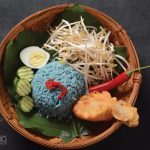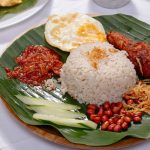The traditional Malay house is one of the best design ideas from our tanah air. It has existed for as long as anyone can remember and is one of the richest components of Malaysia’s cultural heritage. There are many thoughtful aspects to this beautiful houseform but for now, let’s focus on just one: How a structure can grow and evolve according to the needs of its users.

Objective
In Maslow’s hierarchy, housing is at the bottom of the pyramid. Right there with food, water, and clothing. All kinda important if you plan on staying alive or at least catching Infinity War 2. Having a roof over your head, and a bed to sleep on gives us dignity as human beings. I gather it was no different with early Malaysians.
Challenge
If you stayed in a traditional Malay kampung back then, you probably grew up in your parents’ house. Upon reaching a certain age, your parents may decide you need your own room. Or your own house when it’s time to get married.
While it is possible to build you own pad – you’d have to wake up early to go fishing, or plant or harvest stuff. In the afternoon, you might be mending your net, your boat, various household implements or doing some side hustle.
Truth
Good thing you live in a community. And good thing there are off seasons for fishing and farming. This allows you to set the pace of how fast you want your house to be built, and how big you want it to be. The latter is of course, determined by financial resources.
Solution
Traditional Malay houses (TMH) were designed as modular structures. They are often built without nails and are easy to assemble and dismantle. The basic core house is called the rumah ibu. Think of it as a single room unit. TMHs are based on an addition system. Meaning, extensions can be added on as and when the need arises. Not in a haphazard or simply tembak kind of way. Rather, the system is based on sound design, construction and aesthetic principles – with minimal disruption to the main structure.
The original rumah ibu can be converted to a kitchen if the family decides they need a much bigger rumah ibu. Extensions can also include a courtyard, landing, more rooms and even a connecting house if needed.For the addition system to work, TMHs are built with minimal partitions or interior walls. As well, there is very little furniture and most activities are done on the floor. Overall, this provides good ventilation and lighting.
It is said that when a child gets married, his room is disassembled (from his parents’ house) and carried off. A new house is built around his room, while his parents’ house gets a new wall or something.
To fully appreciate the addition system, compare it with concept of modern housing. Most of today’s housing is presented as a highly finished final product. You see the place, you buy it, you move in. Maybe you’ll renovate the kitchen or build an extension for your ever-expanding Star Wars memorabilia but that’s about it for the next few decades.
The house will remain more or less the same until your grandchildren arrive. By which time, you’ll probably can’t remember Darth Vader’s real name, let alone how your house looks like. For orang kota like us, housing is a noun. In traditional malay communities, it’s a verb. An activity which changes and grows according to the needs of its users and community.
It’s not unlike autonomous houses like those built by squatters. Except that much of today’s incremental housing (for marginalised communities) is obstructed by bureaucracy, cultural standards and expensive housing materials.
In Malaysia, there is already a movement to revive the kampong house. Who knows? The house of the future may be the house of yesteryear.
Edward Ong is on a quest to discover and create Malaysia’s best ideas. He is an award-winning Writer and Creative Director and can be found at IdeasAreBorderless.com

Is the Customer at the heart of your Digital Transformation?
On 19th of July, MARKETING will be organising a conference on Customer-Centric Digital Transformation (#DTCX2018) to help you answer that question. The conference will be driven by Paul Stewart who authored the best-seller ‘Branded Customer Service’ and currently is the Special Advisor, Strategy & Transformation for TMI Malaysia. Drawing from his 25 years of diverse experience as a Chief Economist, CEO and consulting in organisational change, transformation and innovation Paul will be sharing his learnings and current trends in this realm.
He will be joined by key thought leaders in the areas of transformation, data analytics, customer service, branding, marketing, digital, human resources and more! Some of the key names who will be joining us include:
* Imran Kunalan Abdullah, Advisor/Principal Consultant – Digital Talent Development & Leadership and People Analytics
* George Aveling, CEO, TMI Malaysia
* Laurence Smith, Head, Asia Region, SmartUP
* Falko Leonhardt, Principal Consultant Transformation Strategy and Change, TMI
and MORE!
Get ready to be inspired by case studies on transformation, honest conversations on driving change and actionable insights you can take back to implement in your organisation.
Date: 19th July 2018
Time: 8.30 am -6.00 pm
Venue: Sime Darby Convention Center, Bukit Kiara
For more information on DTCX 2018 contact Amira today at [email protected] or Book your spot early to avoid disappointment!
MARKETING Magazine is not responsible for the content of external sites.









